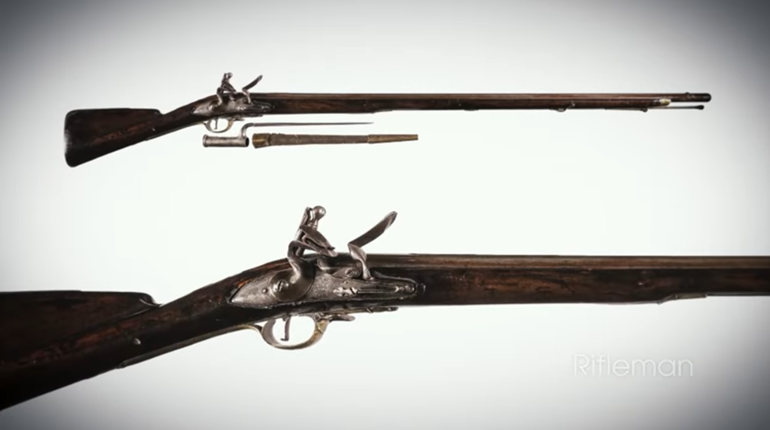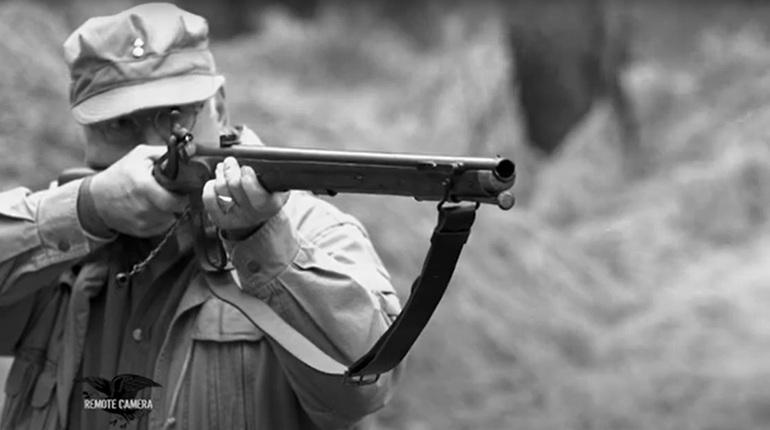** When you buy products through the links on our site, we may earn a commission that supports NRA's mission to protect, preserve and defend the Second Amendment. **

The barrels of very early firearms were smoothbore. Longitudinal grooves in the bore appeared toward the end of the 15th century, but were straight instead of spiraled and had the sole purpose of giving powder and lead fouling a place to accumulate, thus reducing the amount and frequency of cleaning. Around 1520, spiral grooves appeared in some sporting arms. This development has been attributed to Koster of Nuremburg, Germany. However, rifled barrels were not used in military arms for another century, due perhaps to the lack of understanding of the mechanical principles and ballistic advantages of spin-stabilized projectiles.
Before the modern era of mass-production and alloy steel, barrels for small arms were usually made using a variety of hand-production methods. For example:
1. Red-hot ribbons of steel ("skelps") about an inch wide and 1/4 inch thick were hammer-welded together at one end, wrapped in spirals around a mandrel smaller than bore size, then hammer-welded together the rest of their length. This produced a barrel of roughly octagonal shape with a hole in the center that was bored smooth. The rifling grooves were cut one groove at a time using crude, homemade rifling tools. The final octagonal shape was finished by hand filing or water-driven grinders.
2. Folding a thick ribbon of steel lengthwise over a mandrel, the open seams were then hammer-welded together at the edges. This welded joint was not particularly good and often split when heavy loads were fired through it.
3. Bronze or iron was heated to its melting point and the hot liquid metal poured into a mold and allowed to cool. After the mold was broken open, the rough casting of the barrel was finished. This method was often used for cannon and mortar barrels.
Rifling machines were in wide use by the 1700s. Known as "rifling benches" because they were mounted on heavy wooden benches, these machines utilized a wooden rifling guide with an indexing head.
Until the early years of the 20th century, most shotgun barrels were made by twisting alternating ribbons of steel and iron together, wrapping the twisted strands around a mandrel, then hammer-welding the seams together. When properly made, these "Damascus" barrels functioned well with blackpowder loads, but are insufficiently strong for modern smokeless-powder loads.
Before the modern era of mass-production and alloy steel, barrels for small arms were usually made using a variety of hand-production methods. For example:
1. Red-hot ribbons of steel ("skelps") about an inch wide and 1/4 inch thick were hammer-welded together at one end, wrapped in spirals around a mandrel smaller than bore size, then hammer-welded together the rest of their length. This produced a barrel of roughly octagonal shape with a hole in the center that was bored smooth. The rifling grooves were cut one groove at a time using crude, homemade rifling tools. The final octagonal shape was finished by hand filing or water-driven grinders.
2. Folding a thick ribbon of steel lengthwise over a mandrel, the open seams were then hammer-welded together at the edges. This welded joint was not particularly good and often split when heavy loads were fired through it.
3. Bronze or iron was heated to its melting point and the hot liquid metal poured into a mold and allowed to cool. After the mold was broken open, the rough casting of the barrel was finished. This method was often used for cannon and mortar barrels.
Rifling machines were in wide use by the 1700s. Known as "rifling benches" because they were mounted on heavy wooden benches, these machines utilized a wooden rifling guide with an indexing head.
Until the early years of the 20th century, most shotgun barrels were made by twisting alternating ribbons of steel and iron together, wrapping the twisted strands around a mandrel, then hammer-welding the seams together. When properly made, these "Damascus" barrels functioned well with blackpowder loads, but are insufficiently strong for modern smokeless-powder loads.







































